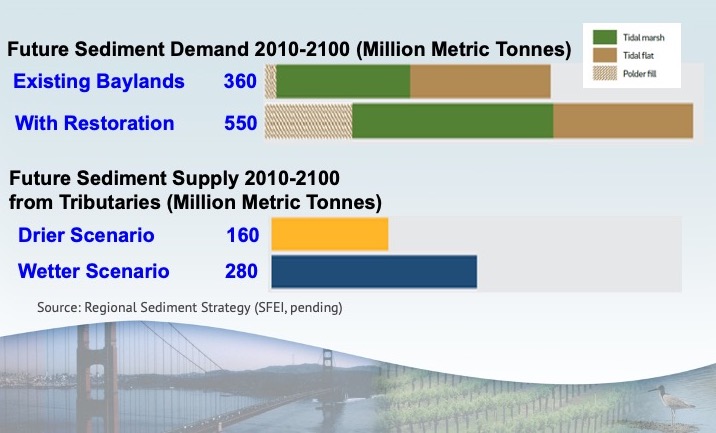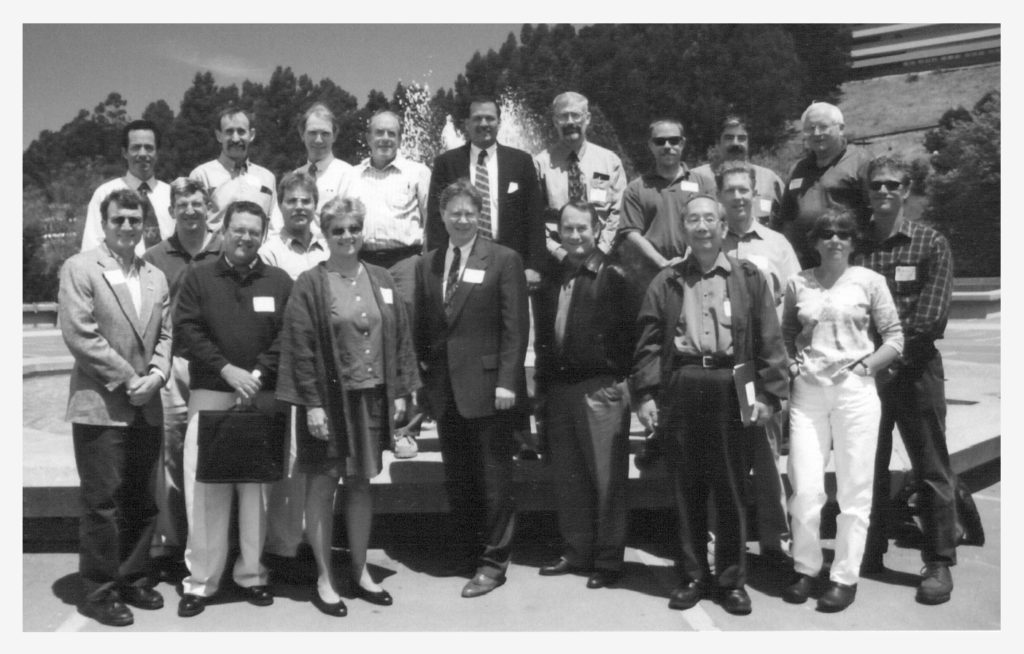
Instead of a fancy room with plush seats, a catered lunch, and speakers at a podium sharing their presentations on a big screen, attendees at the 27th Annual Meeting of the Regional Monitoring Program for Water Quality in San Francisco Bay (RMP) experienced the report-out entirely virtually on their own computer screens, thanks to the Covid pandemic. Nevertheless, and despite Zoom burnout, the October event was a success, with many attendees voicing a preference for the virtual format.
Hot science take homes from the presentations were plentiful. Several sessions covering both Atlantic and Pacific Coasts explored how scientists continue to focus on sediment movement through watersheds and estuaries, especially with its long-standing transport of hitch-hiking contaminants. In the Bay Area, the SF Regional Water Quality Control Board’s Xavier Fernandez also described sediment’s renascence as a precious commodity now, as sea levels steadily climb in the San Francisco Estuary. He shared a number of novel ideas for using all sources of sediment to build shoreline resiliency (see more sediment history in Slickens & Shoals, Estuary News, December 2020).

In another presentation, the University of Washington’s Ed Kolodziej unraveled a murder mystery involving coho salmon and road run-off—one of the favorite talks of the day. Turns out science sleuths detected a compound known as 6PPD-quinone—a chemical used in tires—as the culprit in the high death rates of spawning coho when they return to Puget Sound streams.
Another talk featured the San Francisco Estuary Institute’s Miguel Mendez who explored how the pandemic is changing the types of contaminants appearing in the Bay. Mendez introduced the audience to quaternary ammonium compounds, or QACs, present in the copious amounts of disinfectant products used as we all spray, squirt, and wipe our way through the pandemic. SFEI plans to use a 2017 study of QACs as a baseline for monitoring wastewater, stormwater, and sediment in 2020 and 2021.

The pandemic has also prompted researchers to look at wastewater as a means of tracking the spread of coronavirus in our communities. The online audience peaked at over 320 for the talk by Dr. Alexandria Boehm of Stanford on monitoring coronavirus in wastewater (see Covid Clues in Estuary News September 2020). Managers see this approach as a valuable complement to testing individual patients, capable of providing earlier detection of outbreaks and an integrated assessment of communities of people.
The 2020 Zoom event couldn’t have been more different from the RMP’s first meeting in December 1994, which was held at the Richmond Field Station, in a World War II vintage barracks-like building with wooden chairs and an overhead projector. At the time, the RMP—a collaboration of the Regional Board, the regulated discharger community, and the Aquatic Habitat Institute—was just getting underway. Contaminant monitoring in those days mostly involved characterizing water, sediment, and bivalves in the deep channel out in the middle of the Bay. Then came a big shift in scope.
“The Aquatic Habitat Institute just had five staff back then and they were really struggling,” says Bruce Thompson, the RMP’s first program manager (AHI later evolved into The Watershed Project and SFEI took up the RMP). “Then they were handed this huge project on a platter, with millions of dollars in funding.” The infusion replaced individual monitoring requirements by individual dischargers with a coordinated effort.
Over the first few annual meetings of the fledgling RMP that followed, there wasn’t any data yet to discuss. “It was more of a touchy-feely morale thing, and for planning,” says Thompson.
Rainer Hoenicke, who took over as RMP manager in 1999, still remembers those early meetings. “We tried to keep it economical and simple, we wanted to spend the money on science. We ordered sandwiches rather than having a catered lunch.”

In the 1990s, the focus was mainly on silver, copper, mercury and other heavy metals, as well as legacy contaminants like PCBs and DDT. Annual Meeting participants came to hear about the new data and results. “It wasn’t very interactive until they realized the data was actually useful and good,” says Hoenicke.
After reviewing progress over those first five years, the program shifted in focus from general surveillance and toxicity testing to answering management questions. “We moved into what are the sources of the stuff, where does it come from, and how do we clean it up, being much more question-specific,” says Hoenicke. “The resulting ‘co-production’ approach to science really premiered in the Bay Area then, when scientists sat down with managers through the RMP and asked them, ‘what do you need to know?’”
In parallel, the dischargers paying for the program began to participate more, realizing regulators were making much-needed, more site-specific refinements to water quality objectives and plans based on the new RMP data, says Hoenicke. “There was more ownership of the problems and solutions in the whole community, rather than just allowing the Regional Board to tell them what to do.”
Data generated by the RMP supported the passage of several critical pieces of legislation and Executive Orders. “As a result, concentrations of some phased-out products actually went down, reducing the environmental risks to wildlife and people,” says Hoenicke. One RMP staffer even went on to become the Director of the CA Department of Toxic Substances Control, where she spearheaded a green chemistry initiative. “This was a huge breakthrough in how industry and stewards of the public trust changed the paradigm behind the production of synthetic compounds for industrial and household uses,” according to Hoenicke.
In recent years, the program has moved away from monitoring legacy pollutants to focus more on nutrients, sediment and emerging contaminants, according to RMP Steering Committee Chair Tom Mumley.
Meanwhile the Annual Meeting also moved to more sophisticated venues and presentations—migrating to the Lawrence Hall of Science, the Oakland Museum, and finally the cushy David Brower Center in Berkeley in 2012. Remote access to the meeting via the internet has also grown over the last few years, laying the groundwork for this year’s Covid-mandated virtual meeting.
“I think they did a great job of pulling the whole program together,” says RMP science advisor Maggie Dutch of the Washington State Department of Ecology. “The one thing I missed was the face-to-face conversations that you have afterwards, which are always really valuable.”
RMP Biennial Report Summarizing 2019-2020 Activities
2020 Annual Meeting Presentations & Recordings
Prior Estuary News Stories
Covid Clues in Wastewater September 2020
Beacon Not Burden, September 2017
2oth Anniversary RMP 2013 Report
Top Photo: Sampling setup courtesy SFBRWQCB/RMP